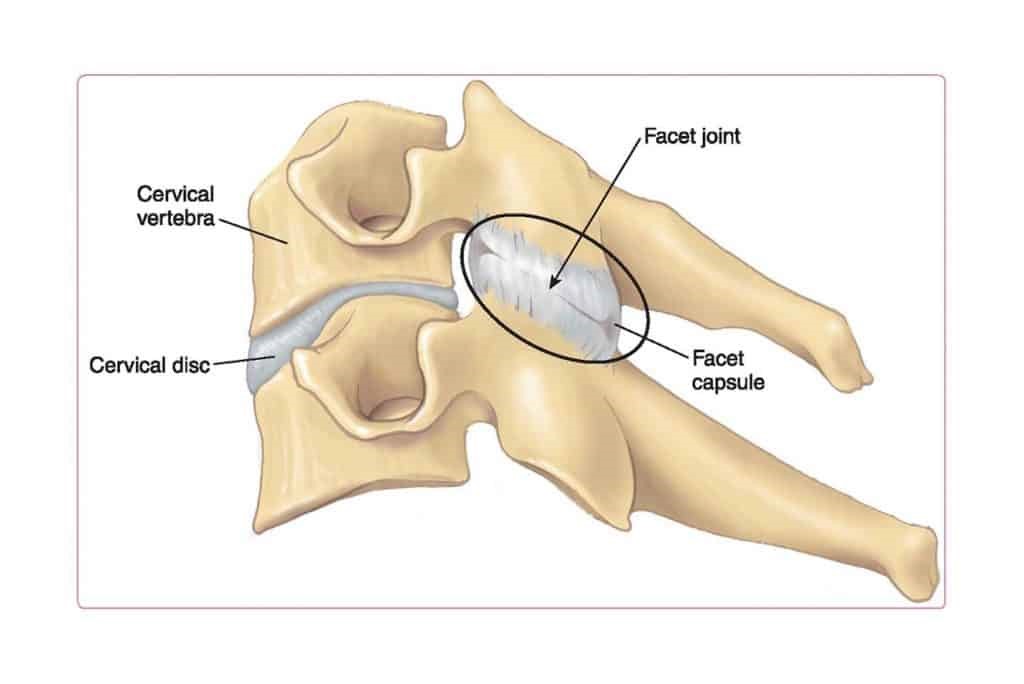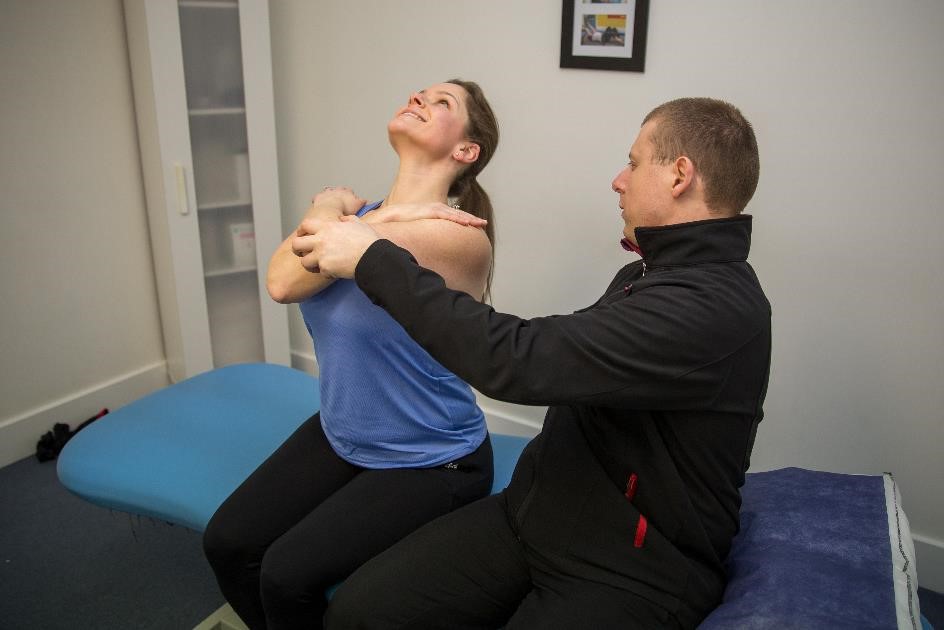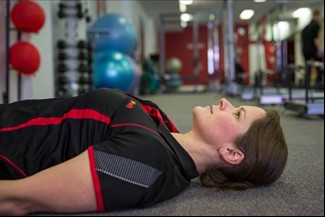Cervical Facet Joint Pain- Fact Sheet
What is a Cervical Facet Joint Pain ?
Facet joints are in the spine, they are bony structures that are on each side of the spine and allow for certain movements within certain areas of the spine, i.e. side-to-side movements, rotation and bending forwards and backwards or a combination of all.
What causes Cervical Facet Joint Pain?
The facet joints can be damaged or irritated by a sudden excessive movement or by activities that repetitively load them. For example, things that place the spine into repeated extension (leaning the head backwards), repeated side-to-side movements or rotational movements. Other normal joint changes with age such as osteoarthritis or bone spurs can also cause some facet joint pain.

Signs and Symptoms of Cervical Facet Joint Pain ?
• Pain on one side of the neck. This gets worse as you look upwards or rotate to that side.
• Muscle stiffness and soreness in the neck, which can refer down to the shoulder
• Facet joint pain is usually worse after being in prolonged postures, and is usually more stiff in the morning.
.

Treatment of Cervical Facet Joint Pain?
Stretching the muscles surrounding the spine in a forward movement, bringing the chin to chest can provide some relief as this takes the pressure off the joints. Facet joint mobilisations by a physiotherapist or MD Health Exercise physiologist can also help manage the symptoms of facet joint pain.
Exercise: When people experience pain, they become less active, which often makes their neck pain worse. Exercise decreases stiffness and weakness and improves spinal health.
Hands on Treatment: Treatment like Facet joint mobilisations by a physiotherapist or MD Health Exercise physiologist can also help manage the symptoms of facet joint pain. This should not be solely relied upon, as evidence suggests this works mainly in the short term, providing 2-3days relief.
What prevents Cervial Facet Joint Pain?
Strengthening and improving control of the muscles that stabilise the upper spine and the muscle that stabilise the shoulder blade contribute for long term stability. These allow the neck to move in a more controlled way and take pressure off the facet joints.
Tailored Clinical Exercise will help to strengthen the muscles that support and stabilise your spine, thus decreasing the severity and occurrence of neck pain.
A positive attitude! These issues can take some time to resolve, particularly if you have been battling it for a few months. Don’t get disheartened! You WILL get better!




